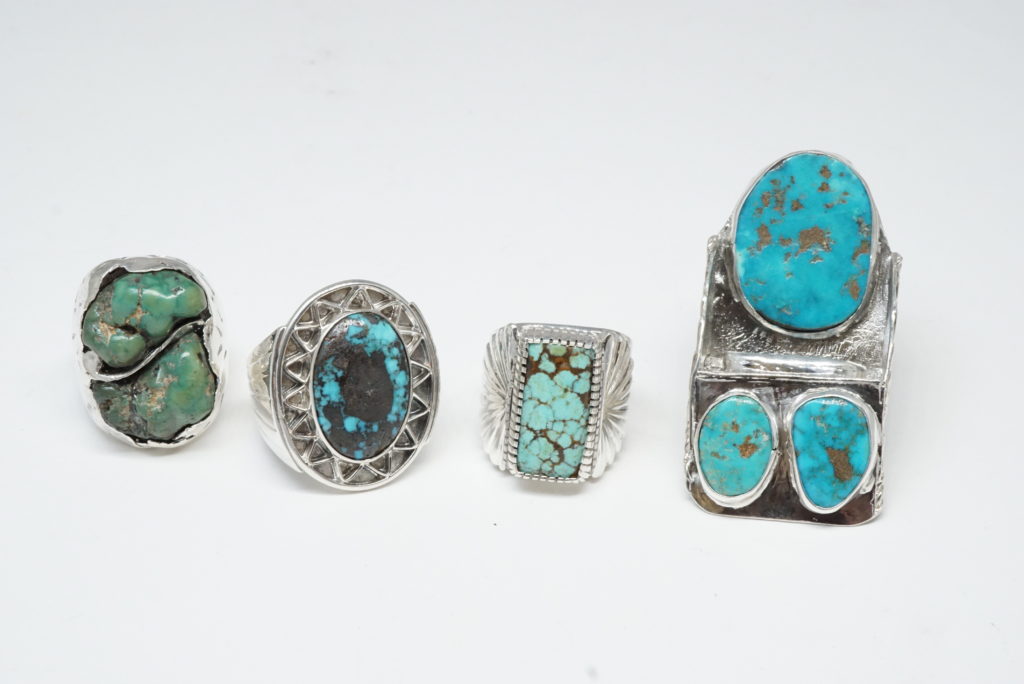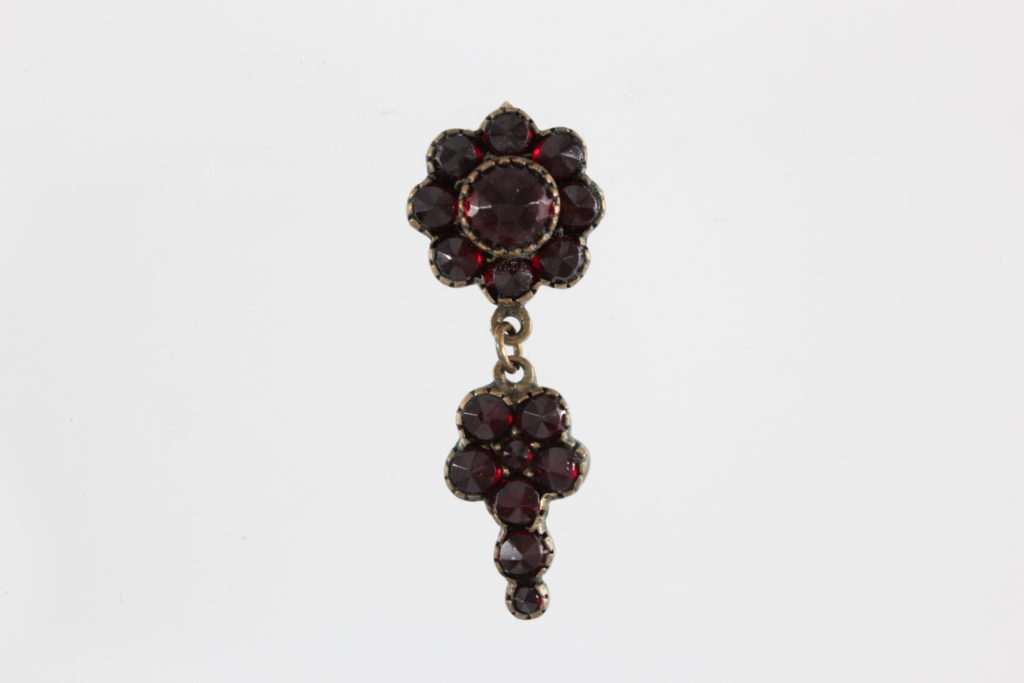All About Southwestern-Style Jewelry
Written by Kira Garrett
April 5, 2021

What comes to mind when you think of the Southwest? Maybe desert and cacti. Or high temperatures and an arid climate. The warm weather and sandy landscape aren’t the only things that stand out about this area, though. The Southwest is also known for its distinctive jewelry style.
A Brief History Of Southwestern-Style Jewelry
Southwestern-style jewelry as we know it today has roots that date back thousands of years. With that said, much of the jewelry and motifs we’ve come to recognize as distinctly southwestern have been introduced in the past few hundred years.
Native Americans were mining turquoise from local deposits and shaping the bright stones into beads and pendants long before Spanish and Mexican ships arrived on their shores in the 1800s. The Navajo, Pueblo, and other area tribes began to combine those newcomers’ silversmithing styles with techniques and materials that had been passed down for generations. Thus, a distinctive style was born.
Materials Used In Southwestern-Style Jewelry
When you see silver stamping, braided leather, and chunky turquoise stones, southwestern jewelry immediately comes to mind. These elements embody the culture and history of the Southwest and inspire modern jewelry artisans to continue creating with them today. The most notable materials include:
Turquoise
Even if you’re not particularly knowledgeable when it comes to jewelry gems and stones, you can probably recognize turquoise when you see it. After all, there’s even a color named for it! But what you may not know is that the stone’s color ranges in hue from white to vibrant blue, navy to lime green, and everything in between.
What’s more, it can actually change color. Turquoise is a porous stone that contains metals like aluminum and copper. If water or oil comes into contact with turquoise, it can seep in and oxidate the metal content. For example, a pale blue piece of turquoise with copper content can turn dark green over time. This is why most modern turquoise is treated—to prevent unwanted color change.
Turquoise is native to the southwestern region of the United States and can be found in other arid climates including Mexico, Egypt, and Tibet.

This turquoise ring was fully separated from the shank.
Coral
Deep red or orange coral has been used in southwestern jewelry designs since Europeans brought the material to the United States. Artisans revered coral for its rare beauty and often combined it with turquoise to make vibrant, colorful designs. Coral is actually calcium, not a stone. In the 1800s, the vibrant red variety most frequently came from the Mediterranean Sea. Now, most red coral comes from Japan or Australia.
Spiny Oyster Shell
This material is made from the spiky, intimidating shells of spiny oysters found off the coasts of California and Mexico. The shells come in many different colors, including red, brown, orange, yellow, and purple. Orange spiny oysters typically live in shallower waters, so they’re less challenging for divers to harvest. But purple spiny oysters are a bit harder to reach, which makes them a coveted shell type that’s frequently used in southwestern-style jewelry designs.
Leather
Leather is another material that distinguishes southwestern jewelry designs. In particular, intricate braiding techniques are used to create bracelets, belts, neckpieces, and more. Artisans also embellish leather cord with turquoise and coral stones.
Acoma Jet
Acoma Jet, or just jet, as it's often called, is a name that suggests the material’s color: jet black. It’s not a stone, mineral, or bone; it’s actually fossilized wood. Jet has been used in southwestern jewelry for years. It can be carved, inlaid, or set just like a gemstone, and it offers a stark contrast to bright coral and turquoise designs.
Sterling Silver
Sterling silver is key to jewelry design inspired by the Southwest. While gold is certainly valuable and makes for beautiful jewelry, southwestern styles stick with silver. Whether it’s cast, hammered, or stamped, silver is the backbone, the base metal, the starting point for all southwest designs.
Techniques Used To Make Southwestern-Style Jewelry
Southwestern jewelry is revered for the craftsmanship that gives it both its unique style and its quality. These intricate techniques require acute attention to detail and lead to a certain quality that’s evident in jewelry from the Southwest. Some of the style’s key techniques include:
Casting
Metal casting is the process by which an artisan pours molten metal into a preformed mold. There are countless techniques that have been used throughout history, but modern-day machinery makes casting quick and easy. Traditional southwestern jewelry is typically made using one of two casting methods:
- Sand Casting: Sand casting is the oldest known method of casting. The process involves carving a design into sandstone and pouring molten metal into the carved mold. Sand casting can be very labor-intensive; depending on the intricacy of the design and the scale of the project, carving sandstone can take an awful lot of time.
- Tufa Casting: Tufa casting is similar to sand casting, but artisans carve molds from a different material: tufa. Tufa is made from compressed volcanic ash. It’s softer than sandstone, so the artisan can—very carefully!—carve extremely intricate designs. And because it’s a more porous material, tufa leaves each cast piece with a unique texture.
Stamping
After a piece of jewelry is cast, it often undergoes even more metalwork before it’s considered finished. Another southwestern design marker that comes into play at this stage is stamping.
Artisans often handcraft their own metal stamps, though of course, some jewelry uses pre-made stamps. They are used to make patterns and designs, and each one has a unique tip that makes a different mark. Stamping can add background texture for dimension, or it can take center stage as the most exciting feature of the piece, depending on how the artist decides to utilize the technique.
Bench Work
Many southwestern silversmiths are also extremely skilled when it comes to bench work, which includes any of the skilled metalwork techniques that artisans typically complete at a jeweler’s bench.
- Saw work: Intricate hand sawing is a staple in southwestern designs. Saws can be used to create cutouts for inlays and to set stones.
- Filing: Artisans use hand files to cut away metal with incredible specificity, adding texture and dimension to southwestern-style jewelry. Filing can give jewelry a weathered, antique look.
Stone setting
If you’ve ever seen a stone sitting in a setting with a jagged edge, you may be looking at a saw-tooth setting—a favorite for southwestern artisans. Cutting a saw-tooth bezel is extremely labor-intensive and requires a lot of skill, so it’s one of the distinguishing features between an authentic Native American piece and a mass-manufactured one.
Southwestern-style jewelry also utilizes irregular stones in its settings. Unfinished stones are celebrated by artisans in the southwest, but irregularly-shaped stones require a bit more care! Be sure to clean your jewelry and check its stones frequently to make sure nothing’s coming loose. If you do find yourself with a stone that’s hanging on for dear life, Quick Jewelry Repairs can help! Learn more about stone and setting repair here.
Overlay
An overlay in jewelry is exactly what it sounds like—one piece of silver laid over another. The top piece is carved, cutout, and otherwise embellished. It’s then riveted in place atop a solid silver piece to create a multidimensional look.
Inlay
Southwestern jewelry is world-renowned for its intricate inlays! Artisans create inlays by adding channels, or empty spaces, to a piece of jewelry. They mix ground-up materials like stone, bone, or wood with epoxy to form a resin that fills the empty channels. Sometimes artists cut stones to fill the empty space instead, though this is less common.
Jewelry Pieces That Make Up Southwestern-Style Jewelry
We’ve looked at how materials and workmanship are markers of southwestern-style jewelry. But there are also key jewelry types that make you think of the Southwest right off the bat.
Bracelets
Many cultures and regions make cuff bracelets, but there’s no denying that cuffs are a staple in southwestern-style jewelry. Thick cuffs often feature quality craftsmanship, carvings, etchings, stamping, and sawing. Other southwestern bracelets showcase one-of-a-kind stones set with saw-tooth bezels. It’s common to see the use of multiple materials and layers of leather and braids.
Necklaces
Of course, necklaces also make the list. Southwestern-style pendants often include traditional Native American motifs—like feathers, animals, and other icons. Or, they let the stones do the talking as the focal point of the piece.
Rings
The chunkier the better when it comes to most southwestern-style rings. A single large stone makes for a bold design, while a series of delicate turquoise rounds add a playful twist to traditional materials. Regardless of the details, bold statement rings are essential in southwestern-style jewelry design.
Styles can come and go with passing trends. But one thing’s for certain, southwestern jewelry is timeless. Modern artisans are constantly reinterpreting traditional designs, and emerging artists pay homage to the region’s design heritage and history to keep southwestern-style jewelry alive.


